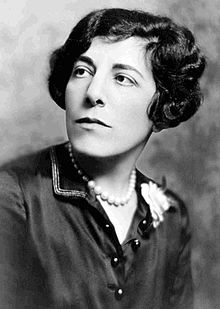
by Kathryn Ruth Bloom
Edna Ferber, Fannie Hurst and Their Cult Classic Jewish Novels
In their heyday during the 1920s and 1930s, Edna Ferber and Fannie Hurst enjoyed tremendous popularity but fell into relative obscurity soon after their deaths in 1968. With a decidedly Jewish sensibility, both of these women tell stories to inspire compassion and empathy about social issues–from body image to opioid abuse, from women’s roles to racism and the treatment of immigrants–startlingly relevant today.
Ferber and Hurst were very different kinds of writers, but their lives overlapped in surprising ways. Both were born in 1885 and grew up in assimilated Jewish families in the American Midwest. Both moved to Manhattan in their twenties to pursue their writing careers. Each was one of two daughters; ironically––or oddly, given their other coincidental pairings––Ferber’s older sister was named Fannie and Hurst’s little sister, who died as a child, was named Edna. Ferber didn’t marry and Hurst and her husband famously maintained separate residences throughout their marriage, giving rise to the expression “a Fannie Hurst marriage.” Neither had children. Both published dozens of well-received novels, short stories, memoirs, plays, and magazine articles that brought important social and cultural issues to the attention of their readers. But in light of today’s excellent fiction by American Jewish women that serves a similar purpose, why am I convinced that people will continue to enjoy and identify with their narratives?

Fannie Hurst
One reason is that both Ferber and Hurst write about struggles we’re still grappling with. Hurst’s 1921 short story “She Walks in Beauty” is a striking example. The protagonist, Carrie Samstag, is an upper-middle-class Jewish widow who lives with her daughter in a Manhattan apartment-hotel. Carrie plays bridge and gossips with her friends. She works hard to maintain a youthful appearance and to encourage an aging bachelor to propose marriage. In addition, she is a morphine addict. As the story unfolds, Hurst traces Carrie’s descent from “plumply adorable” widow to desperate addict during which her “deceptive veneer of propriety” comes to hide a “vicious depravity” that leads to her ultimate death.
Today, it’s almost impossible to avoid newspaper headlines about the addiction epidemic sweeping our country. In 2016 alone, some 42,000 Americans died of opioid overdoses. When I began my research, I didn’t know that there were two earlier opioid epidemics in the United States. During and after the Civil War, many men became addicted to the morphine used to control wounded soldiers’ pain. And during the early twentieth century, many middle- and upper-class women became addicted to morphine prescribed by their physicians to treat chronic pain, such as Carrie Samstag’s neuralgia. “She Walks in Beauty” is a case study of addiction that transcends its own era, and the story takes on even greater meaning as the reader realizes that Carrie might be a woman very much like herself.
Addiction isn’t the only social issue Ferber and Hurst write about. Like many women of our generation, Hurst struggles with issues of body image and what we’d now call an eating disorder. The title of her 1935 “dieting memoir” is No Food with My Meals. And as someone who travelled extensively on business, I identified closely with Ferber’s early short stories about Emma McChesney, a divorced mother who works as a traveling saleswoman. A story in which Emma is sick and alone in a hotel room far from home perfectly reflects my own experience almost a century later.
Emotionally charged issues of race and race relations were as critical in the 1920s and 1930s as they are today. Ferber is probably best-remembered for the story of racial passing in her 1926 novel Show Boat, the source for the frequently revived musical by Jerome Kern and Oscar Hammerstein. In Imitation of Life (1933), Hurst also writes about racism and racial passing. And both novels highlight the difficulties of women forced to make their way in the world alone. Magnolia Hawks Ravenal in Show Boat and Bea Pullman in Imitation of Life must make difficult choices when, respectively abandoned and widowed, they must support themselves and raise their young daughters without any emotional or financial support to fall back on. Sound familiar?

Edna Ferber
Ferber and Hurst also write about immigration and assimilation, and it’s here that their own Jewish roots are most apparent. Ferber’s 1929 Cimarron takes on issues of internal displacement and migration, as well as descriptions of racism and discrimination against Jews and Native- and African-Americans. Her most compelling character is Sol Levy, the sad-eyed Jewish immigrant who never truly fits into his new community in the pre-state Oklahoma Territory. Sol becomes a business and philanthropic leader, but remains as exotic to the other townspeople as the animals in the small zoo he maintains to attract customers to his department store. Hurst’s stories are set in Manhattan’s Jewish communities, where immigrant parents struggle with children desperate to become “real” Americans.
We shouldn’t read these authors out of nostalgia, but because they’re exploring important issues that so obviously still concern us.

